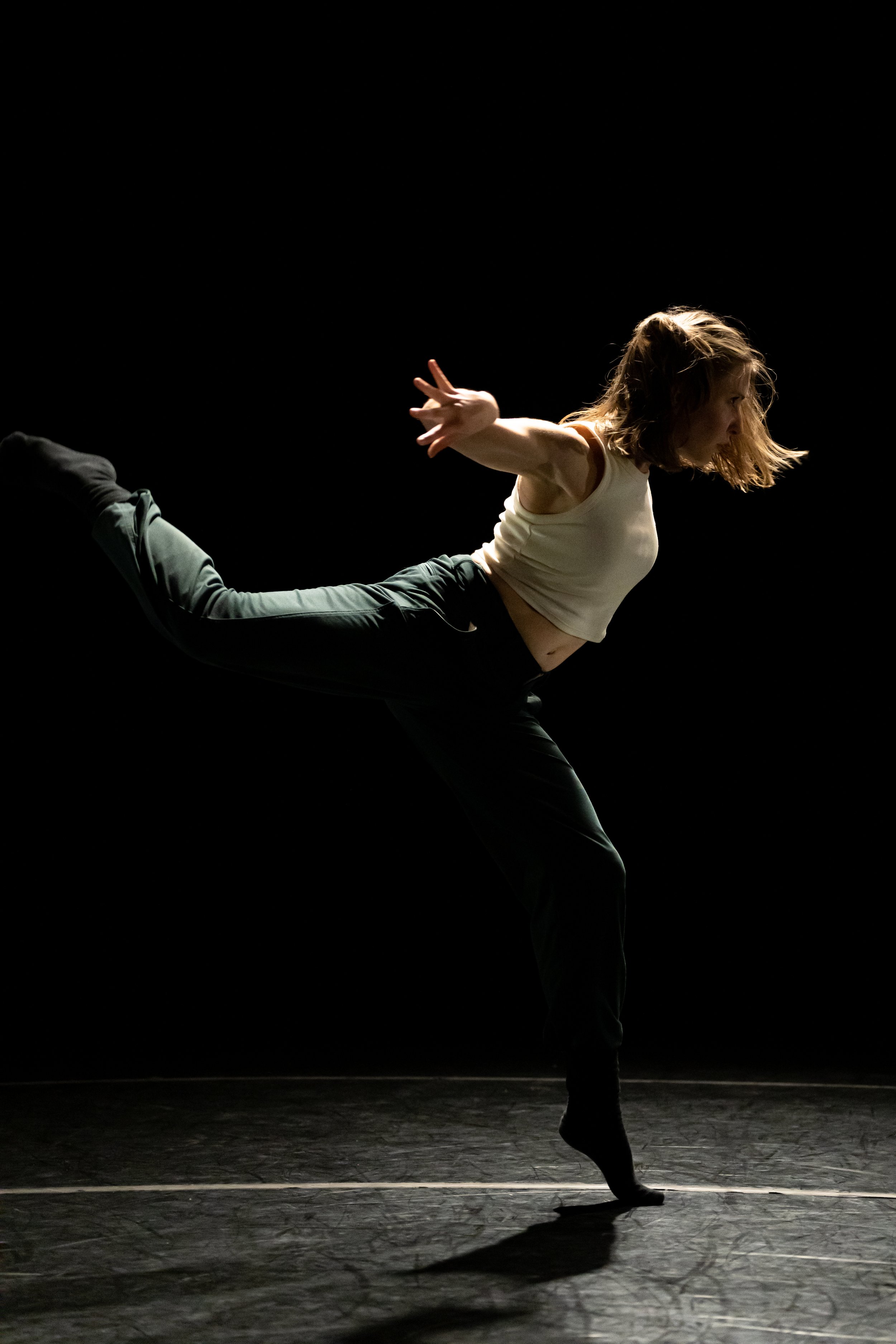Rhea
in a photo by Joe Lambert
(The following is a condensed version of my conversation with Rhea.)
Marie: How did you and Benny come together?
Rhea: I met Benny back in the Fall of 2022. I showed up for his Contemporary Class and we had a little chat afterward. He was looking for dancers and that’s how we connected. The relationship is ongoing.
M: Have you participated in choreographic processes that included non-moving collaborators in the past?
R: I have a friend, her name is Katie Moorhead, who actually knows Benny from freelancing in New York. She put together a small outdoor project that was a collaboration in an outdoor sculpture park in Rhode Island. She had a friend who is a classical guitarist and put together this really wonderful, very laidback performance series that was a little bit choreography-based, a little bit of improv, interacting onstage with the musicians, so they weren’t separated. That was a great experience; I felt like I connected with the musicians in a more intimate way than you normally would if you were separated by an orchestra pit. The times that I’ve had collaborations with non-moving people, it felt like they were fully a part of the work. It didn’t feel like they were separated by being non-moving, it was like all of us together were the moving components of the work.
M: How would you describe your level of agency within the total collaboration?
R: I think Benny creates a good place to let you…there’s room for my self to inform the work. But, I also feel a good balance of letting them inform my artistic journey. I feel like it is a good balance of both.
M: Do you have any thoughts on the props?
R: In the beginning, it felt very alien, just because it is a white board. It’s very obviously a clean, blank slate. Usually working with props, you have, already, a sense of what to do with it. I didn’t feel that with the blank board, the white board, so it took a little bit for me to figure out what felt comfortable, moving with it. I also think the more that Begin Again is shaping, is being shaped, is helping to inform how to interact with the boards. You want to interact with it in a way that is not just holding it with your hands, but it’s just big enough for it to be a little bit awkward.
M: Are you choosing to actively engage with or integrate identity into your approach to Begin Again?
R: I’m not sure yet!
M: Is the trauma and healing work that is happening inside of the concepts informing Begin Again’s creation process personal to you?
R: I do feel like I use my personal experience in the initial creation process. But then, moving forward with the work, I then prefer to connect through the work. So, I guess, using personal experience in the beginning, and then letting that morph into being a little less personal but still emotionally connected. I don’t know why that is? I don’t know if that’s a protection instinct or if it’s more finding this…I feel like “character” is not the right word in the work, because it isn’t a narrative piece. Finding an artistic presence that is not “Rhea Keller is herself in the work,” but finding another sense of self.
M: Are you finding in Begin Again opportunities for self-reinvention? Or, has there been any new beginning for you performatively?
R: I like to find an arc through the whole piece, and I think the end will give a resolution that will help me find that. Benny and I just started working on this solo where I have two boards. They are this weight I have to carry, or this trauma that I have to deal with before that transformation can happen. They start as very weighted, and I can barely carry them. Then, eventually, I find a way to make them light. We’ve talked about metamorphosis and there is an image of a butterfly. I do feel like that is a very cathartic moment for me personally. So, that process is starting to happen, and the change into more hopefulness is going to be a big catalyst for, I think, the group or the community as a whole to find that.
- Marie
